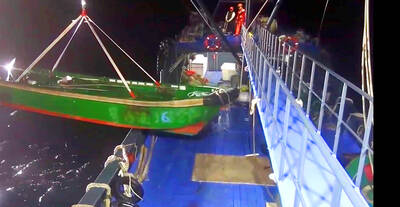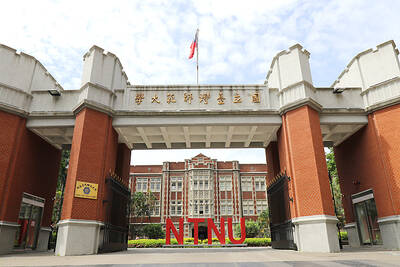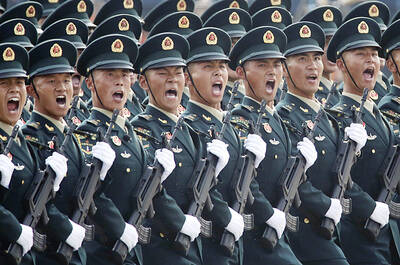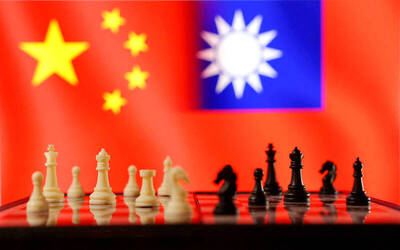Civil Aeronautics Administration (CAA) Director-General Yin Chen-pong (尹承蓬) said yesterday the agency was planning to spend NT$60 billion (US$1.9 billion) building the Taiwan Taoyuan International Airport’s third terminal, which is scheduled to be completed in 2018.
Yin said the construction of the terminal was proposed as the nation gears up to become one of the important aviation hubs in the Asia-Pacific region.
Saying that several organizations have estimated that the region would see growth in flight passengers in the near future, Yin cited the UN’s World Tourism Organization as an example, which said it estimated last year that the number of outbound passengers in China and Southeast Asia would increase by an average of 5 percent to 9 percent over the next 20 years.
Boeing Co has also forecast that passenger flight services in Asia would account for 41 percent of the global market by 2028, up from 32 percent last year, he said.
Boeing said last year that the passenger flight market in China and other countries in the Asia-Pacific region would grow by an average of 5.4 percent per year in the next two decades, which was higher than the global average of 5.2 percent, Yin said.
The CAA also estimated that flight passengers at Taoyuan International Airport would increase from approximately 21.6 million to 45 million by 2020 and could rise to 58 million by 2030.
“When we estimated the growth of flight passengers, we did not just take into account the increase of the cross-strait flight passengers,” he said. “We have considered the opportunities that could be brought by the cross-strait Economic Cooperation Framework Agreement [ECFA].”
According to the CAA’s preliminary plan, the nation will spend about NT$60 billion constructing the key infrastructure, including the third terminal, boarding areas, airport ramps and a people mover system.
The construction is scheduled to be completed in 2018.
Among the CAA’s plans are a satellite concourse that would allow passengers to complete their check-in before arriving at the terminal, which would cost additional NT$20 billion, it said. Another NT$7 billion will be invested in building auxiliary facilities, such as the ground transportation center, it added.
The Taoyuan Airport Co, which is scheduled to be established next month, will carry out the construction project, Yin said, adding that the government funding would account for only 20 percent of the total construction costs.
The Executive Yuan is now reviewing the master plan for the new terminal, he said, adding that the plan also must be reviewed again by the Council for Economic Planning and Development before the guidelines for execution could be drafted.

Taiwan yesterday condemned the recent increase in Chinese coast guard-escorted fishing vessels operating illegally in waters around the Pratas Islands (Dongsha Islands, 東沙群島) in the South China Sea. Unusually large groupings of Chinese fishing vessels began to appear around the islands on Feb. 15, when at least six motherships and 29 smaller boats were sighted, the Coast Guard Administration (CGA) said in a news release. While CGA vessels were dispatched to expel the Chinese boats, Chinese coast guard ships trespassed into Taiwan’s restricted waters and unsuccessfully attempted to interfere, the CGA said. Due to the provocation, the CGA initiated an operation to increase

CHANGING LANDSCAPE: Many of the part-time programs for educators were no longer needed, as many teachers obtain a graduate degree before joining the workforce, experts said Taiwanese universities this year canceled 86 programs, Ministry of Education data showed, with educators attributing the closures to the nation’s low birthrate as well as shifting trends. Fifty-three of the shuttered programs were part-time postgraduate degree programs, about 62 percent of the total, the most in the past five years, the data showed. National Taiwan Normal University (NTNU) discontinued the most part-time master’s programs, at 16: chemistry, life science, earth science, physics, fine arts, music, special education, health promotion and health education, educational psychology and counseling, education, design, Chinese as a second language, library and information sciences, mechatronics engineering, history, physical education

The Chinese military has boosted its capability to fight at a high tempo using the element of surprise and new technology, the Ministry of National Defense said in the Quadrennial Defense Review (QDR) published on Monday last week. The ministry highlighted Chinese People’s Liberation Army (PLA) developments showing significant changes in Beijing’s strategy for war on Taiwan. The PLA has made significant headway in building capabilities for all-weather, multi-domain intelligence, surveillance, operational control and a joint air-sea blockade against Taiwan’s lines of communication, it said. The PLA has also improved its capabilities in direct amphibious assault operations aimed at seizing strategically important beaches,

‘MALIGN PURPOSE’: Governments around the world conduct espionage operations, but China’s is different, as its ultimate goal is annexation, a think tank head said Taiwan is facing a growing existential threat from its own people spying for China, experts said, as the government seeks to toughen measures to stop Beijing’s infiltration efforts and deter Taiwanese turncoats. While Beijing and Taipei have been spying on each other for years, experts said that espionage posed a bigger threat to Taiwan due to the risk of a Chinese attack. Taiwan’s intelligence agency said China used “diverse channels and tactics” to infiltrate the nation’s military, government agencies and pro-China organizations. The main targets were retired and active members of the military, persuaded by money, blackmail or pro-China ideology to steal